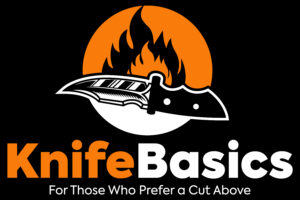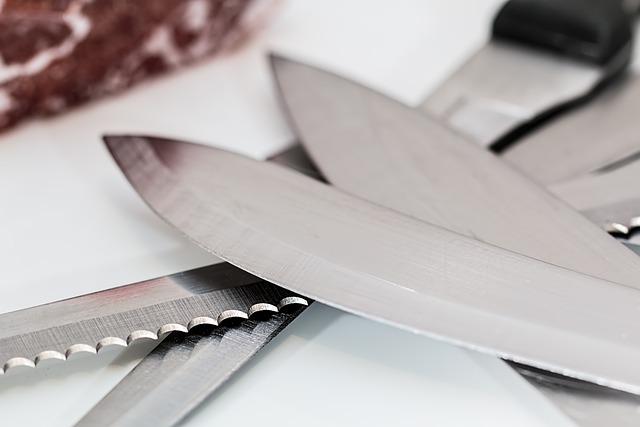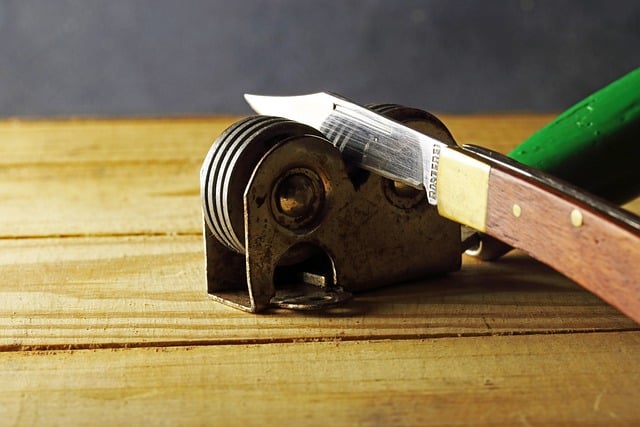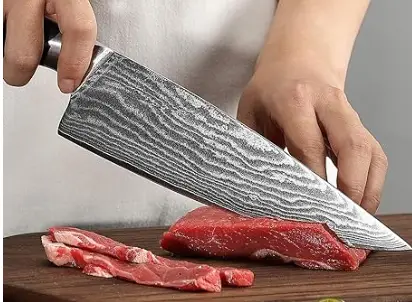Are you tired of investing in expensive knives that quickly lose their sharpness and durability? Look no further than knife steel blanks, the secret weapon for achieving precision and long-lasting performance in your kitchen or workshop. In this article, we will explore the countless benefits of knife steel blanks and how they can elevate your cutting experience to a whole new level.
Knife steel blanks are precisely cut pieces of high-quality steel, specifically designed to be transformed into custom knives. By starting with a blank, you have complete control over the design, ensuring that it perfectly suits your needs and preferences. Not only will this result in a one-of-a-kind knife, but it also allows you to choose the ideal steel grade, thickness, and length that best suits your cutting tasks.
There are numerous advantages to using knife steel blanks. Firstly, they provide exceptional edge retention, meaning you won’t have to constantly sharpen your blade. Additionally, knife steel blanks offer supreme durability, ensuring they can withstand even the toughest cutting jobs without losing their integrity.
Invest in knife steel blanks today and experience the unparalleled precision and durability that they bring to every cutting task.
Understanding the importance of precision and durability in knife making
When it comes to knives, precision and durability are two essential factors that can make or break the cutting experience. A knife that lacks precision can make it difficult to achieve clean and accurate cuts, while a knife that lacks durability will quickly lose its edge and become ineffective. This is where knife steel blanks come in.
Knife steel blanks are precisely cut pieces of high-quality steel, specifically designed to be transformed into custom knives. By starting with a blank, you have complete control over the design, ensuring that it perfectly suits your needs and preferences. Not only will this result in a one-of-a-kind knife, but it also allows you to choose the ideal steel grade, thickness, and length that best suits your cutting tasks.
The different types of knife steel blanks available
Knife steel blanks come in a variety of types, each with its own unique properties and advantages. Some of the most popular types include:
1. Carbon steel blanks: Known for their exceptional edge retention and ease of sharpening, carbon steel blanks are a favorite among professional chefs and knife enthusiasts. They offer great performance and can hold a razor-sharp edge for extended periods.
2. Stainless steel blanks: If you’re looking for a knife with high corrosion resistance, stainless steel blanks are the way to go. They are ideal for use in humid or wet environments, as they won’t rust or stain easily. Stainless steel blanks are also known for their strength and durability.
3. Damascus steel blanks: Damascus steel blanks are renowned for their beautiful and distinctive patterns. They are made by layering different types of steel together, resulting in a blade that is not only visually stunning but also incredibly strong and sharp.
4. High-speed steel blanks: If you’re in need of a knife that can withstand high temperatures and heavy-duty cutting tasks, high-speed steel blanks are the answer. They are designed to retain their hardness and sharpness even under extreme conditions.
Factors to consider when choosing knife steel blanks
When choosing knife steel blanks, there are several factors to consider to ensure that you select the right one for your needs. Here are some key considerations:
1. Steel grade: Different steel grades offer different properties, such as hardness, toughness, and corrosion resistance. Consider the specific characteristics you require for your intended use and choose a steel grade accordingly.
2. Thickness: The thickness of the knife steel blank will impact the overall weight, balance, and cutting performance of the finished knife. Thicker blanks are generally more robust and suitable for heavy-duty tasks, while thinner blanks are lighter and more suitable for precision cutting.
3. Length: The length of the knife steel blank will determine the size of the finished knife. Consider your intended use and personal preferences when choosing the length of the blank.
4. Heat treatability: Some knife steel blanks are easier to heat treat than others. If you plan on heat treating the blank yourself, consider the heat treatability of the steel grade you choose.
How to properly heat treat and temper knife steel blanks
Proper heat treatment and tempering are crucial steps in the knife-making process to ensure that the blade achieves the desired hardness, toughness, and edge retention. Here’s a general overview of the heat treatment and tempering process for knife steel blanks:
1. Annealing: Start by annealing the knife steel blank to relieve internal stresses and make it easier to shape. Heat the blank to a specific temperature and allow it to cool slowly.
2. Hardening: Heat the blank to a critical temperature and then quench it in a suitable medium, such as oil or water, to rapidly cool and harden the steel.
3. Tempering: To reduce the brittleness of the hardened steel and improve its toughness and flexibility, temper the blade by reheating it to a specific temperature and then allowing it to cool slowly.
Proper heat treatment and tempering require precise temperature control and knowledge of the specific steel grade you’re working with. It’s essential to follow established guidelines or seek professional advice to ensure optimal results.
Tips for working with knife steel blanks
Working with knife steel blanks requires skill and attention to detail. Here are some tips to help you get the most out of your knife steel blank:
1. Use appropriate safety measures: When working with knife steel blanks, it’s important to prioritize safety. Wear protective gear, such as gloves and safety glasses, and work in a well-ventilated area to avoid inhaling harmful fumes.
2. Take your time: Precision is key when shaping and grinding the knife steel blank. Take your time and work carefully to ensure that the blade is symmetrical and the bevels are even.
3. Test the edge: Before completing the knife, test the edge to ensure it is properly sharpened and aligned. This will help you identify any areas that require further attention or adjustment.
4. Seek guidance and practice: If you’re new to knife making or working with knife steel blanks, seek guidance from experienced knife makers or join a community of enthusiasts. Practice and continuous learning will help you refine your skills and achieve better results.
Popular knife steel blanks used by professional knife makers
Professional knife makers often have their preferred knife steel blanks based on their requirements and personal preferences. Here are some popular knife steel blanks used by professionals:
1. O1 tool steel: Known for its excellent wear resistance and edge retention, O1 tool steel is a popular choice among professional knife makers. It is versatile and suitable for a wide range of applications.
2. D2 tool steel: D2 tool steel offers exceptional hardness and wear resistance, making it ideal for heavy-duty cutting tasks. It is often used in the production of high-quality chef knives and hunting knives.
3. AEB-L stainless steel: AEB-L stainless steel is a favorite among professional chefs due to its excellent edge retention and corrosion resistance. It is also known for its ease of sharpening.
4. CPM-S30V stainless steel: CPM-S30V stainless steel is highly regarded for its superior edge retention and toughness. It is commonly used in premium-quality folding knives and outdoor blades.
Where to buy high-quality knife steel blanks
When it comes to purchasing high-quality knife steel blanks, it’s important to source them from reputable suppliers. Here are some reliable sources for knife steel blanks:
1. Specialty knife-making suppliers: Many suppliers specialize in providing knife-making materials, including high-quality knife steel blanks. These suppliers often offer a wide range of steel grades and types to choose from.
2. Online marketplaces: Online marketplaces such as Amazon and eBay also offer a variety of knife steel blanks. However, be sure to research the seller’s reputation and read customer reviews before making a purchase.
3. Local blacksmiths and knife makers: If you’re lucky enough to have local blacksmiths or knife makers in your area, consider reaching out to them. They may be able to provide you with high-quality knife steel blanks or recommend reputable suppliers.
- KEEPS KNIVES RAZOR-SHARP: Maintain knife edges between professional sharpenings.
- EFFORTLESS MAINTENANCE: Designed for regular use—hone your kitchen or BBQ knives every other time for peak performance.
- COMFORTABLE & SAFE GRIP: Smooth polypropylene handle offers a secure hold while sharpening.
- VERSATILE SHARPENING TOOL: Ideal for chef knives, BBQ tools, and everyday kitchen cutlery.
- CONFIDENCE FOR LIFE: Backed by a lifetime guarantee for long-term reliability and satisfaction.
- ✔️ DIAMOND ELECTOPLATING: State-of-the-art manufacturing for precision Kitchen, Home or Hunting blade sharpening. Ensures efficient and sharp sharpening of dull knives and tools.
- ✔️ OVAL SHAPE: This knife sharpener rod is designed to ensure higher sharpening efficiency.
- ✔️ LIGHTER TOUCH: Requires much less force than most sharpening steel. 'Easy-does-it" leads to long lasting results..
- ✔️ ELEGANT DESIGN: A pleasing and attractive addition to any kitchen or work area,
- ✔️ UNCONDITIONAL LIFETIME GUARANTEE | 100% TESTED | BUY WITH CONFIDENCE!! Visit KotaJapan to contact our friendly Customer Service in Sunny Arizona, or contact us through your Amazon order screen.
- 12" Sharpening Steel maintains the edge on knives and extends the life of your cutlery with regular use.
- Steel rod is made of carbon steel and plated with nickel-chrome.
- Ergonomic, easy-to-grip polypropylene handle with hanging hole.
- Wipe clean with a damp cloth.
- Normally used for Dull Knifes, Best Choice for chef using.
Conclusion: Why knife steel blanks are a valuable asset for knife makers
Knife steel blanks offer numerous benefits for knife makers, including exceptional edge retention, supreme durability, customizability, and versatility. By starting with a blank, knife makers have complete control over the design and can create one-of-a-kind knives that perfectly suit their needs. With the right skills and techniques, knife steel blanks can be transformed into high-performance tools that provide precision and durability for a lifetime. So, why settle for mass-produced knives when you can achieve precision and durability with knife steel blanks? Invest in knife steel blanks today and elevate your cutting experience to a whole new level.






